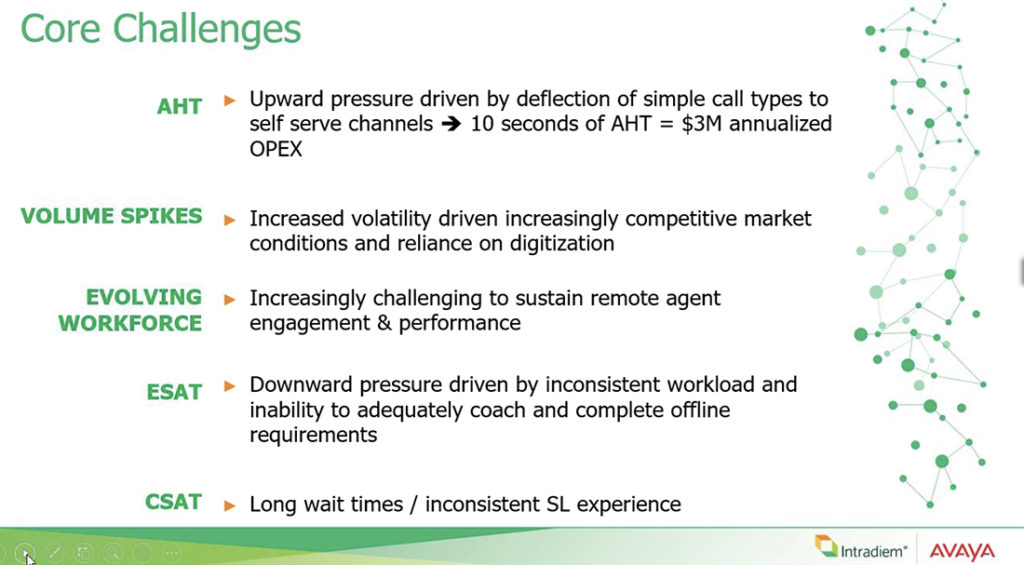Artificial intelligence (AI) applications can benefit contact center operations in many ways. For instance, they can schedule health and wellness breaks to support agents working from home or in a traditional on-premise environment. The use of AI-powered technology can also improve the customer experience and reduce agent handling time (AHT) with significant financial benefits.

“Intelligent automation solutions can help agents in real time based on business rules that you define, triggered by actual center conditions,” said Kevin Jolliffe, SVP, North America, Intradiem.
Jolliffe was one of several Intradiem professionals who discussed “Harnessing Call Center Data – A Real World Story,” in a series of IAUG Eastern, Western and Central Regional Events in late May. Intradiem is a DevConnect Partner, integrating out of the box with the Avaya ACD system using feeds and APIs provided by Avaya Call Management System (CMS) and Avaya Aura Application Enablement Services (AES).
Haresh Gangwani, EVP, Global Alliances, ran through the many challenges facing today’s contact centers, including massive amounts of data, constantly changing conditions, reliance on historical data, a decentralized workforce and competing goals, such as delivering excellent customer service at the lowest possible cost.
Intradiem’s Larry Swift, director of solution consulting, noted that Intradiem’s solution is purpose-built for the contact center, addressing both agent activity and workforce management. “You can set up rules for actions during the day that are automated without manual intervention,” he said. “The next time something happens, you don’t have to go back and build it again. You can just point and click in the wizard.”
Jennifer Lee, chief strategy officer, noted at IT professionals can use their creativity in writing their rules. “For instance, you could automate random wellness breaks for your agents, such as inviting them to get up from their desks and go for a walk,” she said. “It’s an agent-friendly approach to contact center management.”
Jolliffe outlined several use cases for applying an intelligent automation solution:
• Call handling – after call work, talk time, hold time, call consult, agent state analysis
• Reporting – business impact reporting
• Off-phone activity –automated dynamic training delivery
• Coaching – automated delivery
• Agent recognition – anniversary and birthday alerts, surprise breaks
• Staffing adherence and flexibility – schedule monitoring, attendance status, and agent mobile access
“If an agent is stuck on long call, you can write a rule for the agent to leave for a break upon completion,” Jolliffe said. “That way the agent gets the same amount of break time and is less likely to try to end the call prematurely.”

From a management perspective, Intradiem’s Intelligent Assistant can send alerts to supervisors in real time for proactive rather than reactive responses. “It can be difficult for a supervisor looking at a number of agents to see an issue pop up, then get to the agent and take action,” Jolliffe said. “By setting up a rule, you can automate that manual intervention process.”
On the financial side, Jolliffe cited a major Canadian communications and media company that faced challenges of seasonality and an inconsistent work load. “The company was also an early adopter of the remote agent model, well before the pandemic hit,” he said. Deploying the Intelligent Assistant solution resulted in a 3 percent improvement in agent handling time. “While that might not sound like much, it meant a very significant annual savings to the company,” he said.
Wrapping up the session, Jolliffe said Intradiem’s solution empowers agents and supervisors, while improving the customer experience. “Being able to proactively reach out to remote agents, deliver training and coaching, and address scheduling and workforce management issues is great for the entire contact center team.”
